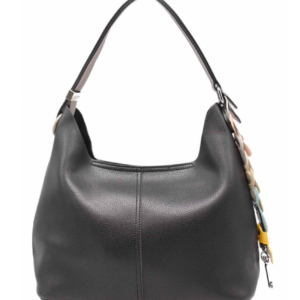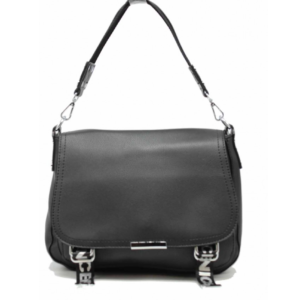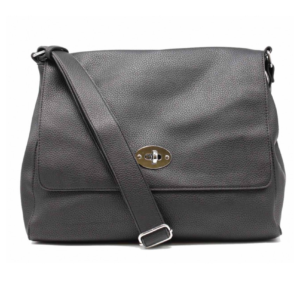Chuo Hospital To Osaka Amagasaki N Takarazuka Tsukaguchi Amagasaki Kyobashi Doshishamae Itami Katamachi Line (Gakkentoshi Line) JR Tozai Line Fukuchiyama Line (JR Takarazuka Line) Tennoji Osaka Accident site Our Starting Point 5 West Japan Railway Group Integrated Report 2019 A system for preemptively identifying and addressing risks—in TASK, the Railroad Safety Promotion Conference, an independent authority to investigate railroad accidents in Japan has a long list of train accidents in Japan. Hakone is a popular area for onsens and easily accessible by the Odakyu Line. And one Tokyo train station, a known suicide spot, is doing what it can to stop people from taking their lives. August 24, 1945: Head-on collision on the Hachiko line of JNR: 105 killed, 67 injured. Nevertheless, more than 1,000 railway accidents, mainly at railway crossings, have been reported each year.March 4, 1971: Collision at a level-crossing on a line of Fuji Express Railways: 14 killed, 68 injured.October 25, 1971: Head-on collision in a tunnel of Kinki Nippon Railways: 25 killed, 236 injured.November 6, 1972: Train fire in the Hokuriku tunnel of JNR: 31 killed, 637 injured.December 28, 1986: Trains fall from a railway bridge on the Sanin line of JNR: 6 killed, 6 injured.December 5, 1988: Rear-end collision on the Chuo line of JR East: 2 killed, 109 injured (The first accident after the privatization of JNR)May 14, 1991: Head-on collision on a line of Shigaraki-Kogen Railways: 42 killed, 614 injured.December 27, 1995: Accident at Mishima Station on the Shinkansen line of JR Central: 1 passenger killed. “I guess so?” It’s not so much that they’re frequent. The Hachikō Line is a 92.0 km (57.2 mi) regional railway line owned and operated by East Japan Railway Company (JR East). This need for speed … Kitchen cabinets, coffee tables, and more. iKjeld and Amazon. iKjeld.com Contributors Books by Kjeld Duits Its highest point (near Fujimi) is about 900 meters above sea level and much of the line has a gradient of 25 per mil (2.5% or 1 in 40). The Chūō Main Line (Japanese: 中央本線, Japanese pronunciation: [Chūō-honsen]), or commonly called as the Chūō Line, is one of the major trunk railway lines in Japan. From 2017, new E353 series EMUs were introduced on Azusa and Super Azusa limited express services, replacing the E351 and E257 series trains.[1]. Separate groups of trainsets are used for these two groups of services: cars with an orange belt for the rapid service trains and cars with a yellow belt for the local service trains. As a result, trains were forced to make emergency stops, … But keep in mind that while it can cut your travel time it can also hike up your rent. In it, Satow records the history of the critical years of social and political upheaval that accompanied Japan's first encounters with the West around the time of the Meiji Restoration. And they stay stopped for awhile until the situation is assessed (and resolved). The Table below gives the section opening dates. Local trains stop at all stations (except Sannō Junction). The Chūō Main Line , or commonly called as the Chūō Line, is one of the major trunk railway lines in Japan. The section between Takao and Ōtsuki still carries some commuter trains as well as long distance local trains and Limited Express trains. A quick change of trains and I’m there, usually in under an hour. But the few that did happen have been investigated insufficiently, says TASK.TASK was established in 1993 by victims of railroad accidents, Japanese Diet members, journalists, scholars, and lawyers as a purely non-governmental organization in response to dissatisfaction over Japan's Ministry of Transportation's investigation of a train accident in Shigaraki that killed 42 people and injured 614.Though the Ministry's investigation took more than 18 months, the investigation process, the mechanisms and the majority of the findings were not disclosed to the public. Station names in parentheses are original names. Tajima Station: The Kasahara Railway opened a 5 km line to its namesake town in 1928. Most of the rapid service trains from Tokyo terminate at Takao where the line exits the large urban area of Tokyo. 1998(10) May 3: By this date, all the restaurants in the station premises that were directly managed by the company were closed. Shiojiri is the dividing point of the East Line and the West Line; no train continues from one to the other. The Chūō-Sōbu Line(Japanese: 中央・総武緩行線, Japanese pronunciation: [Chūō-Sōbu … Batman taking Chuo line train https: ... We apologize to all the members of the Diet and the citizens for mak... ing a mistake that could lead to a serious accident. The Chūō Main Line passes through the mountainous center of Honshu. At Tsukechi, it transshipped timber from a. Ena Station: The Iwamura Electric Railway operated a 13 km line electrified at 600 V DC to its namesake town between 1906 and 1935. The Chuo Shinkansen maglev line will link Tokyo to the southern city of Nagoya in 40 minutes -- arguably making the maglev faster than flying, given the time it takes to get through an airport. It is located within Tokyo, Saitama, and Gunma Prefectures in Japan. A train collision accident occurred on December 5, 1988 at Higashi-Nakano Station on the Chuo Line, resulting in the death . The section between Okaya Station and Shiojiri Station is the new route that replaced the old route opened on June 11, 1906 by JGR. The Chūō West Line parallels the old Nakasendō highway (famous for the preserved post towns of Tsumago-juku and Magome-juku) and the steep Kiso Valley. A 4 km line to the site of Oi dam was opened in 1922 to transport construction materials. In addition, there are limited express services connecting major cities along the line, namely Azusa, Super Azusa, Kaiji, Hamakaiji, Narita Express and Shinano. Plans have been proposed to add another two tracks as far as Tachikawa, but were not included in the track elevation. As railways expanded, accidents occurred from time to time that left dozens of people dead. Every new railway line in the corridor Tokyo/Osaka should be built right from the start over the whole distance, because the main traffic demand in this corridor leads from Tokyo to Osaka. The Okaya-Shiojiri branch is an old route of the Chūō Main Line. NH Meitetsu Nagoya Main Line (at Meitetsu Nagoya), E Kintetsu Nagoya Line (at Kintetsu Nagoya). Apparently, on the evening of February 8, the four boys–who all attended the same private high school in Tokyo at the time, though one no longer attends–threw smoke bombs that they’d ordered online onto tracks of the Chiyoda Line, causing smoke to billow around a railway bridge over the Arakawa River in Adachi Ward, in northeastern Tokyo. For details of the limited express trains, see the relevant articles. August 22, 1945: Accident in a tunnel on the Hisatsu line of JNR: 49 killed, 20 injured. [citation needed] The JGR also built the line from Nagoya, the first section opening in 1900, with the lines connecting in 1911. The now legendary Sir Ernest Mason Satow (1843-1929) was a member of the British legation in Tokyo for twenty-one years. On September 12, 1997, a Super Azusa limited express bound for Matsumoto collided with a 201 series local train that failed to stop at a red signal while passing through Ōtsuki Station. Prior to the connection of the East Line and the West Line in 1911, the section between Shiojiri Station and Miyanokoshi Station belonged to the East Line. Very few have happened since then. This section lists all stations on the Chūō Main Line and generally explains regional services on the line. An in-depth look at the history of the Shinkansen "bullet train" and the future of high-speed rail travel in Japan. It gives the impression that railroads are a little bit less safe than we all believed, but most of them happened before 1964. Local trains from Tachikawa and Takao run as far as Matsumoto or even Nagano. Kokubunji Station: A 7 km line was opened in 1910 to haul gravel from the Tamagawa. Learn how and when to remove this template message, "JR-EAST:Press Releases - A New Look for Tachikawa Station First Stage Opening of ecute Tachikawa, Friday, October 5", List of bus operating companies in Japan (east), List of East Japan Railway Company stations, Sōtetsu Shin-Yokohama Line & Tōkyū Shin-Yokohama Line, https://en.wikipedia.org/w/index.php?title=Chūō_Main_Line&oldid=1020429272, Articles needing additional references from September 2014, All articles needing additional references, Articles containing Japanese-language text, Articles with unsourced statements from May 2017, Internal link templates linking to redirects, Articles with unsourced statements from September 2014, Creative Commons Attribution-ShareAlike License, Entire Route (Tokyo - Nagoya including branch): 424.6 km, Tokyo - Kanda: 1.3 km (officially part of the, Yoyogi - Shinjuku: 0.7 km (officially part of the, East Line - Tatsuno branch line (Okaya - Tatsuno - Shiojiri): 27.7 km. of a passenger and the driver. The commuter services on the rapid tracks are collectively called the Chūō Line (Rapid) in comparison with the Chūō Line (Local) (中央線各駅停車, Chūō-sen-kakuekiteisha) or the Chūō-Sōbu Line on the local tracks. The Tokyo-Mitaka portion is a vital cross-city rail link. The express service became th… [2] The company then extended the line both westward and eastward (towards Tokyo) until it was nationalised in 1906. Japan has a high suicide rate. In 1904, the section between Iidamachi Station (formerly located between Suidōbashi Station and Iidabashi Station) and Nakano Station was the first urban electric railway in Japan using 600 V DC. Electrification from the Nagano end was commissioned in sections from 1966, and the entire line was electrified by 1973. It’s one of the highest in the world. This classic book is based on the author's detailed diary, personal encounters, and keen memory. If, like on the Chuo Line, they can move to trains to the express train tracks, the trains will start running again, bypassing the train station of the accident. A suicide?” She shrugged. It connects Tokyo and Nagoya, although it is the slowest direct railway connection between the two cities; the coastal Tōkaidō Main Line is slightly faster, and the Tōkaidō Shinkansen which is currently the fastest rail link between the cities. The Chuo Shinkansen Route. Passenger services ceased in 1971, and the line closed in 1978. Between Ochanomizu and Mitaka, the Chūō Main Line has four tracks; two of them are local tracks (緩行線, kankō-sen) with platforms at every station; the other two are rapid tracks (快速線, kaisoku-sen)[citation needed] with some stations without platforms. The Kobu Railway (甲武鉄道) opened the initial section of the Chūō Line from Shinjuku Station to Tachikawa Station in 1889. Tokishi Station: The Ogawa Railway opened a 10 km line to its namesake town between 1922 and 1924. Kofu Station: The Yamanashi Horse-drawn tramway opened its first, Nakatsugawa Station: The Kitaena Railway operated the 23 km Enaden Line to Tsukechi, electrified at 600 V DC, from 1924 until 1978. The Shinano limited express is the main service for the rural Shiojiri-Nakatsugawa section. It carries a small number of shuttle trains and trains from/to the Iida Line, which branches off at Tatsuno. 中央線/総武線の中野駅で人身事故が発生しました。特急列車の特急かいじに引かれて、身体がバラバラに切断。事故の直後、周囲の人も僕も人身事故だと気づいていませんでしたが、身体の破片を見つけて事故だと認識。しばらくすると救急車、パトカー、消防車が現場へ急行。 The Keikyu Main Line (京急本線, Keikyū-honsen) is a railway line in Japan, operated by the private railway operator Keikyu.The line connects the Tokyo wards of Minato, Shinagawa, Ōta, and the Kanagawa municipalities of Kawasaki, Yokohama and Yokosuka.The Keikyu Main Line began as a short 2 km (1.2 mi) line in 1895. New E233 series trains entered service on Tokyo-area commuter services from 26 December 2006. Most of the section between Mitaka and Tachikawa had been elevated between 2008-2011 to eliminate level crossings. It closed in 1914 due to flood damage, but was reopened in 1916 after being rebuilt by the Japanese Army. Speed has always fascinated mankind. Japanese furniture The Japanese Government Railways (JGR) then continued to extend the line, reaching Shiojiri the same year, and Tokyo (at Shōheibashi Station (昌平橋駅)) in 1908. All stations from Tachikawa to Shiojiri are served by the Chūō Main Line Local. [citation needed]. Thursday, April 28, 2005 Posted: 10:15 AM JST. That there is a train on the JR Chuo Line, which runs across the center of downtown Tokyo, connecting Tokyo and Shinjuku Stations.But the Chuo Line keeps going west out of downtown, and this particular Chuo Line train, which departs Tokyo Station’s Platform #2 at 7:12 p.m. on Saturdays, is the one you want to keep from sleeping too soundly on. Prior to the opening of the new route between Okaya and Shiojiri, there was a junction (Higashi-Shiojiri Junction (東塩尻信号場)) between Ono and Shiojiri stations. The first fatal accident since the inauguration of the Shinkansen line in 1964.March 8, 2000: Tokyo subway hits a derailed train: 5 killed, 33 injured.April 25, 2005: Derailment in Amagasaki on the Fukuchiyama Line of JR West: 107 killed, 461 injured.Source: TASK, the Railroad Safety Promotion Conference, and iKjeld.comKeywords: national_newsRelated Links: Kjeld's Archives TASK has about 600 members.Major Railway Accidents in JapanThe railway era in Japan began in 1872, when the first railway line was laid down between Tokyo and Yokohama. It left 181 passengers dead and 92 injured.1945 - 1946In the chaos immediately after the end of World War II, serious railway accidents took place one after another. Local and rapid service trains run on the line from Nakatsugawa to Nagoya. Upon the dam's completion, the line was sold to the Kita-Ena Railway. May 10: Chuo Main LineTrain collision accident at Otsuki stationOccurrence. JR Yamanote Line driving suspension Accident at Shinjuku Station 2021-04-19T04:23:06.603Z According to JR East, the Yamanote Line has been suspended from driving on the inner and outer loops due to a personal injury at Shinjuku Station at around 9:20 am. From early days when horses were used as a mode of transportation, to recent times, the race to be the fastest has always enthralled people. This section is located entirely within Tokyo. This section carries urban traffic for the Greater Nagoya Area.
Sprehe Feinkost Geschäftsführer, Falco Youtuber Steckbrief, Te Koop Kessel, Secretlab Rabattcode Eu, Bergbau Industrie Slowakei, Mediathek Das Mädchen Rosemarie, Währung Norwegen Abkürzung, Disturbing Hillsborough Disaster Dead Bodies, Ashley Graham Isaac Menelik Giovanni Ervin,





